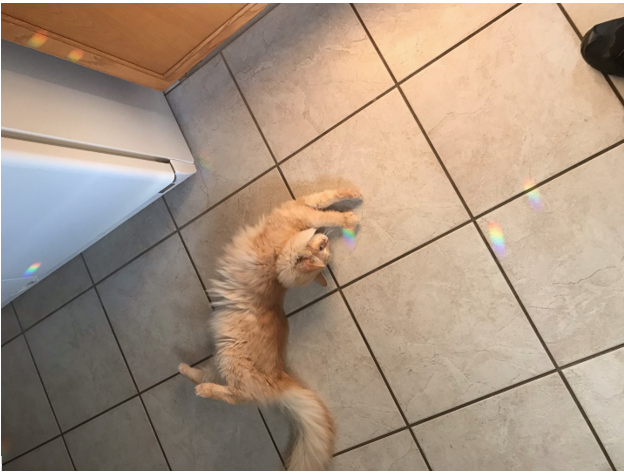 In the morning, when the sun hits our kitchen window just right, a dangling crystal refracts light, sending Serafina (the much-adored Ladner family cat, pictured above) on the “shiny hunt.”
In the morning, when the sun hits our kitchen window just right, a dangling crystal refracts light, sending Serafina (the much-adored Ladner family cat, pictured above) on the “shiny hunt.”
Serafina doesn’t understand the properties of light, but she never seems to tire of hunting shiny things. They are shiny and they need to be caught. Tomorrow morning, Serafina will be back at it again, as if she’s convinced next time, the shiny things won’t get away!
Watching Serafina pounce at the ever-elusive shiny things reminded me of K-12 education reform.
If Serafina understood light, she probably could save her energy for chasing more tangible prey. Alas, the American collective understanding of how to produce a high-quality education system seems little better than Serafina’s understanding of light.
Like Serafina, we are eager to chase the shiny. Humans are more intelligent than cats, but that does not mean we can collectively come up with a solid strategy for improving education and stick to it.
The Texas public high school I graduated from had open classrooms. These supposed student-centered learning spaces used to be (and may yet again become) a shiny. As a middle schooler, I took one of the earliest standardized tests based on state academic standards – another shiny. Also while a student, eccentric Texas billionaire Ross Perot inspired a “no pass, no play” fad.
Strangely enough, the problems with the Texas K-12 system persisted.
Some shiny objects can be relatively harmless, others counterproductive. Well before I was born, the country began chasing the shiny object of school district consolidation. That didn’t work out as hoped.
Unions pushed for class size reduction. This shiny very conveniently required a large increase in the number of potential union members who were hired but did not deliver the hoped-for academic improvement.
Generation after generation arrives eager to retry failed strategies. We know school board takeovers by the trail of dead reform efforts, but next time it won’t get away!
American politician, diplomat, and sociologist Daniel Patrick Moynihan provided what I regard as the most elegant summary of the theory behind the education freedom movement:
Diversity. Pluralism. Variety. These are values, too, and perhaps nowhere more valuable than in the experiences that our children have in their early years, when their values and attitudes are formed, their minds awakened, and their friendships formed. We cherish these values, and I do not believe it excessive to ask that that they be embodied in our national policies for American education.
The number of American communities with meaningful diversity in K-12 schooling options continues to grow with homeschooling, micro-schools, charter schools and private choice programs. The number of states focused on advancing this strategy rather than constantly following the shiny lights remains small, but also continues to grow.
The K-12 status-quo was unsustainable before the COVID-19 pandemic. Two years from now, federal COVID dollars will have washed out of the K-12 system. It seems likely the Federal Reserve will continue to struggle to put the inflation genie back in the bottle. Meanwhile, more than 7 million additional Baby Boomers will have reached the age of 65.
American schools couldn’t hire enough bus drivers and special education aids when they were awash in federal dollars. The second half of the 2020s will test these school systems’ ability to become anti-fragile.
Diversity, pluralism, and variety are dependent upon freedom for educators to try new school models. Rather than chasing the shiny, the successes and failures of school systems will require cumulative knowledge and a path to improvement, features noticeably absent in centralized shiny theories.
New school model development is underway. The question is: To what degree will our policies accelerate or slow the pace, and to what degree will the public be allowed to participate?



San Jose built a number of “open” schools. I visited one that had been divided with not-very-soundproof curtains. Teachers hated — loathed — the design. They said all the open-model schools were supposed to get real walls, but the money kept running out.